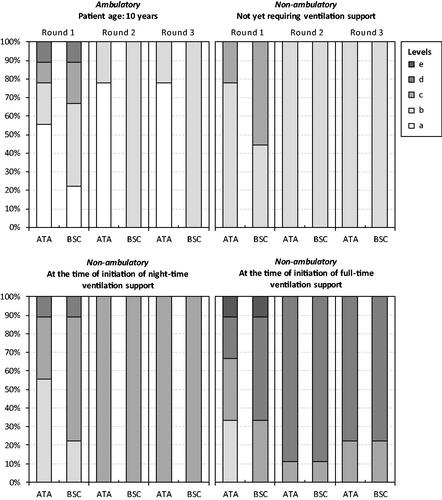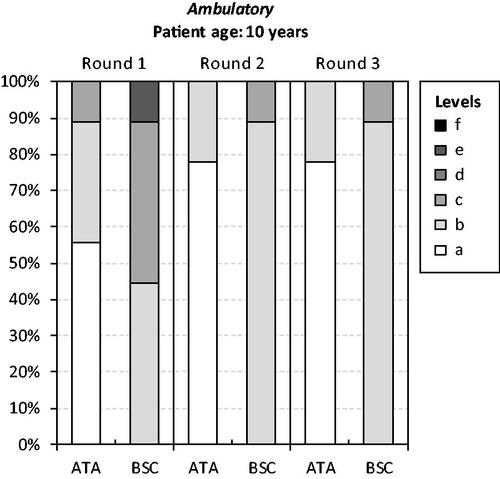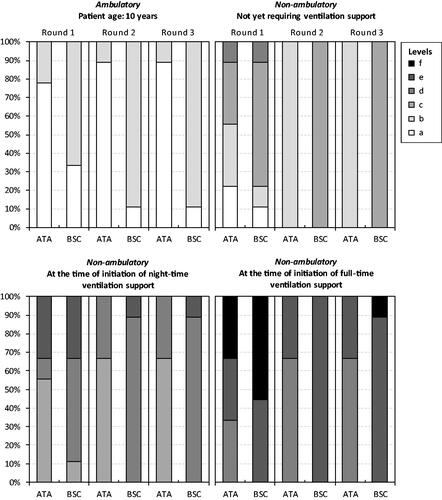Figures & data
Figure 1. Panelists’ responses to Health Utilities Index-question 7 (emotion). Note: Ataluren in addition to best supportive care (ATA). Best supportive care (BSC). The HUI item-specific levels range from ‘a’ (indicating no/minimal negative impact on health status and a low/minimal disease burden) to ‘e’ (indicating a very high degree of impairment/compromise and a high/maximum disease burden).

Figure 2. Panelists’ responses to Health Utilities Index-question 8 (pain and discomfort). Note: Ataluren in addition to best supportive care (ATA). Best supportive care (BSC). The HUI item-specific levels range from ‘a’ (indicating no/minimal negative impact on health status and a low/minimal disease burden) to ‘e’ (indicating a very high degree of impairment/compromise and a high/maximum disease burden).

Figure 3. Panelists’ responses to Health Utilities Index-question 9 (ambulation). Note: The HUI item-specific levels range from ‘a’ (indicating no/minimal negative impact on health status and a low/minimal disease burden) to ‘f’ (indicating a very high degree of impairment/compromise and a high/maximum disease burden). Ataluren was assumed to be administered from a mean patient age of 5 years and continue up until and beyond loss of independent ambulation. Mobility in disease stages (2), (3), and (4) was ‘f’ (‘Unable to walk at all’). Ataluren in addition to best supportive care (ATA). Best supportive care (BSC).

Figure 4. Panelists’ responses to Health Utilities Index-question 10 (dexterity). Note: The HUI item-specific levels range from ‘a’ (indicating no/minimal negative impact on health status and a low/minimal disease burden) to ‘f’ (indicating a very high degree of impairment/compromise and a high/maximum disease burden). Ataluren was assumed to be administered from a mean patient age of 5 years and continue up until and beyond loss of independent ambulation. Ataluren in addition to best supportive care (ATA). Best supportive care (BSC).

Supplemental Material
Download MS Word (18.7 KB)Data availability statement
The data that support the findings of this study are available from the corresponding author upon reasonable request.
